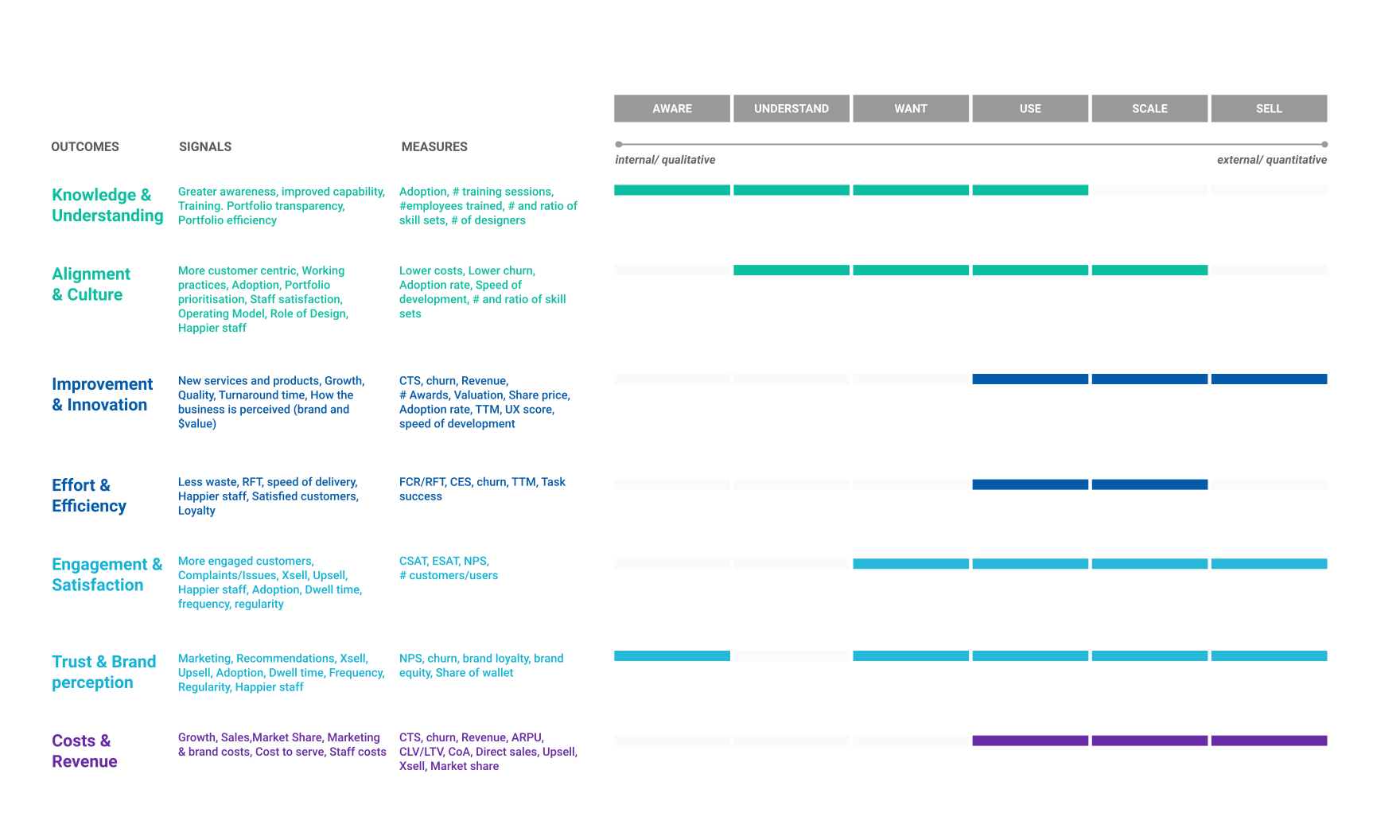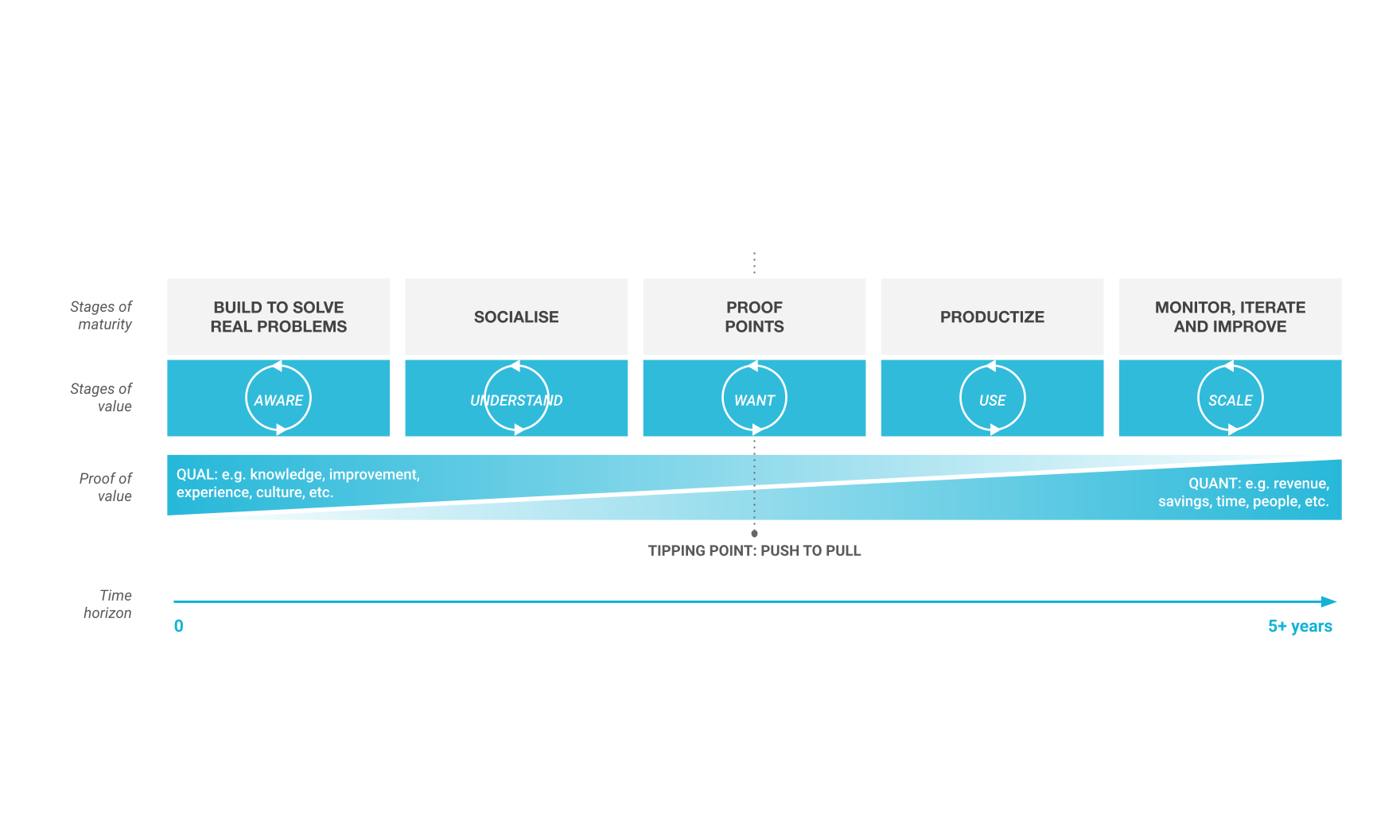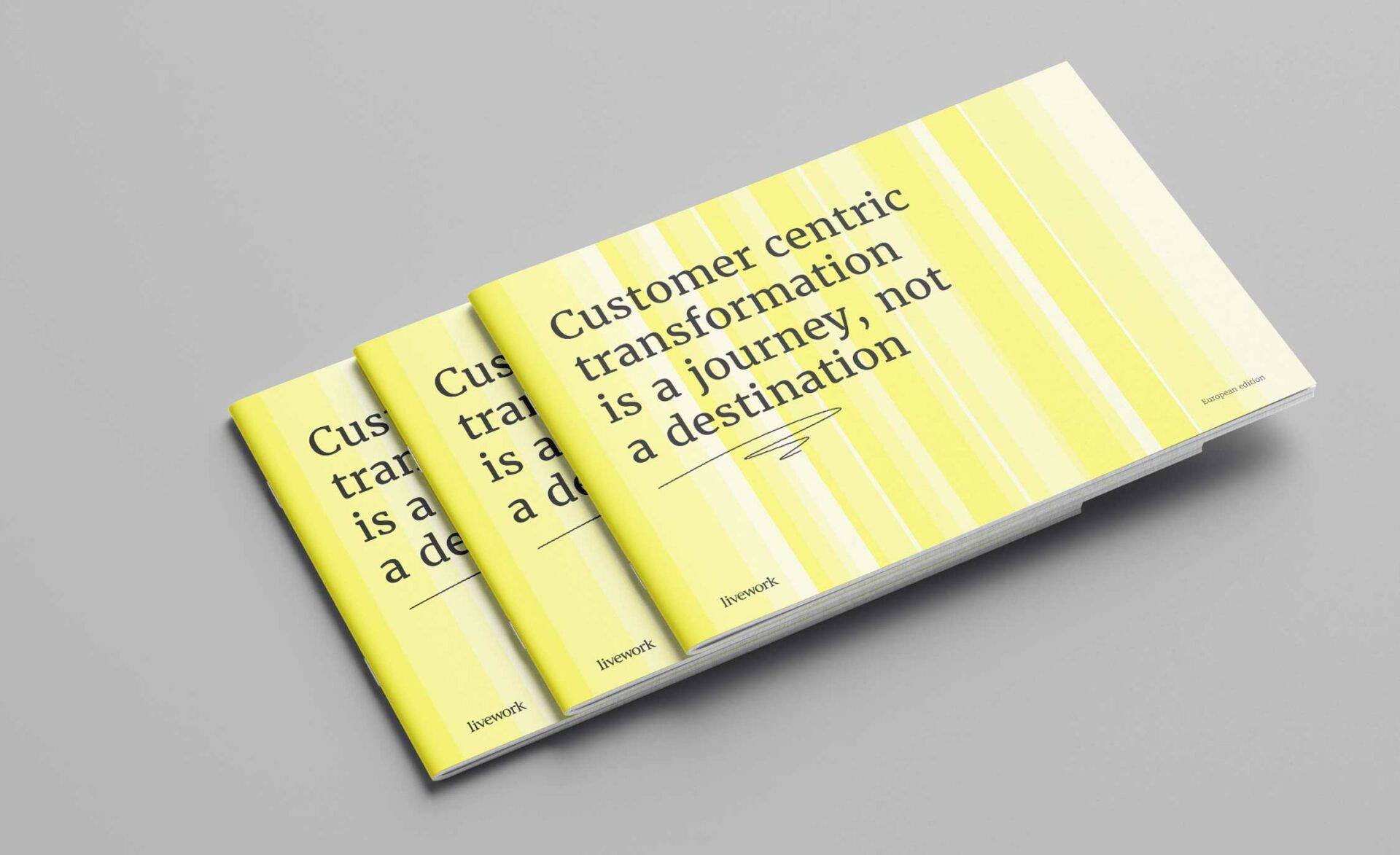In my last article, called the Value of customer centricity, I looked at how we understand value and how, ultimately, the value we place on things is very much context dependent. I also made the case for saying that users of a service value the experience they receive when they use that service and this is just as important as – and sometimes more than – the price they pay for the goods they receive.
I also said that in order for an organisation to provide a good service experience to their users they have to be customer centric – whether their users are customers, citizens, patients or other stakeholders. In the context of providing services, being customer centric has value because it provides outcomes that are valuable in their own right (like increased knowledge or better brand perception). But how do we go about measuring the value of these customer centric outcomes? That’s what I want to explore and explain in this article.
The dimensions of customer centricity shown below that I mentioned in the last article – together with revenue and costs – are the dimensions of customer value that we at Livework typically look to impact and measure when we engage in a customer centricity programme with a client.

But we don’t take this list for granted, or assume that it’s necessarily comprehensive. Before we do anything else we sit down with an organisation to work out with them what their customers actually want, need and value. This then allows us both to understand and agree on what is valuable to the organisation both internally, in order to serve their customers in the way that they should, as well as what is valuable externally to their customers.
The Customer Centricity Value Lifecycle
Part of agreeing which elements of customer centric value are important to an organisation and its customers is to understand when each of those different dimensions of customer value operate. We call this the Customer Centricity Value Lifecycle (see below). It recognises that some of these dimensions such as knowledge and understanding happen (or are needed), before others, and that the value of being customer centric necessarily changes over time.

It also recognises that different dimensions of customer value are measured in different ways. You need to use both qualitative and quantitative metrics to measure what people think and feel about their interactions with an organisation (and the service and products they get from it), as well as what they actually do in those interactions. And whilst you may not always be able to measure some of these dimensions directly, there are proxy measures that will be good indicators of whether the organisation is benefitting from being customer centric.
Outcomes, signals, metrics
How we go about measuring these dimensions of customer centric value is also important to get right. As an overarching principle we like to use the outcomes/signals/metrics framework approach that asks what outcomes we are looking for (both internally and externally), and then where we might find evidence that these outcomes are being achieved, and then finally what actual metrics we can use to demonstrate that a particular outcome has been met.
An example
So let’s take a dimension of customer centricity value like ‘Effort’, and the amount of effort that both the organisation and the customer have to expend to achieve a desired outcome such as ‘being able to complete my registration easily’.
What we do is look at the points or the signals that indicate effort is currently expended in that task, such as time taken, complaints, satisfaction, and so on. And within each of these areas there will already be a number of metrics such as time to completion, number of complaints, customer satisfaction score etc, that can be used to build up a picture of the amount of effort it takes to provide and to consume a service.
The key point is that at each stage of this process we’re using what customers value as our guiding principle to determine what it is, why it’s important, where it’s found, and how and when it should be measured.
Locating these dimensions in the lifecycle
The Dimensions of Customer Centricity table shows where each of these dimensions occur in the value lifecycle of an organisation, as well as what the signal areas and metrics are that relate to each of them. As I said before this is not comprehensive, nor specific, but a useful starting point to work out what is important and of value to an organisation and its customers in order to create the best possible experience for them.
It’s all about the context
Since we know that value is context dependent we also know that it will vary from service to service and across different organisations. In some services (like banking) the credibility and trust will probably be what matters most, in others (like e-commerce) it might be effort and efficiency. The point is to acknowledge at the outset that there is more to value than simply the revenue/cost equation and acknowledging this enables an open and honest debate about what is important to your customers.
Value is more than just money
Organisations need to understand that value is not just about price – it’s more than that. And that the value an organisation is part of creating, benefitting from, and measuring, is context dependent and changes over time. One of these contexts is the value that customers want and experience from an organisation. And if an organisation takes a customer centric approach to delivering services then much more value can be realised and, indeed, created.
Creating and realising value is not a zero sum game – and if done properly it’s a better outcome for both customers and service providers – everybody wins.

I am a lead service designer and a researcher with a strong interest in human behaviour and user research. I work on the crossroads of service design, human behaviour and business to create meaningful customer experiences that deliver value to both the customer and business.






